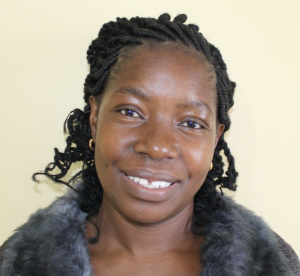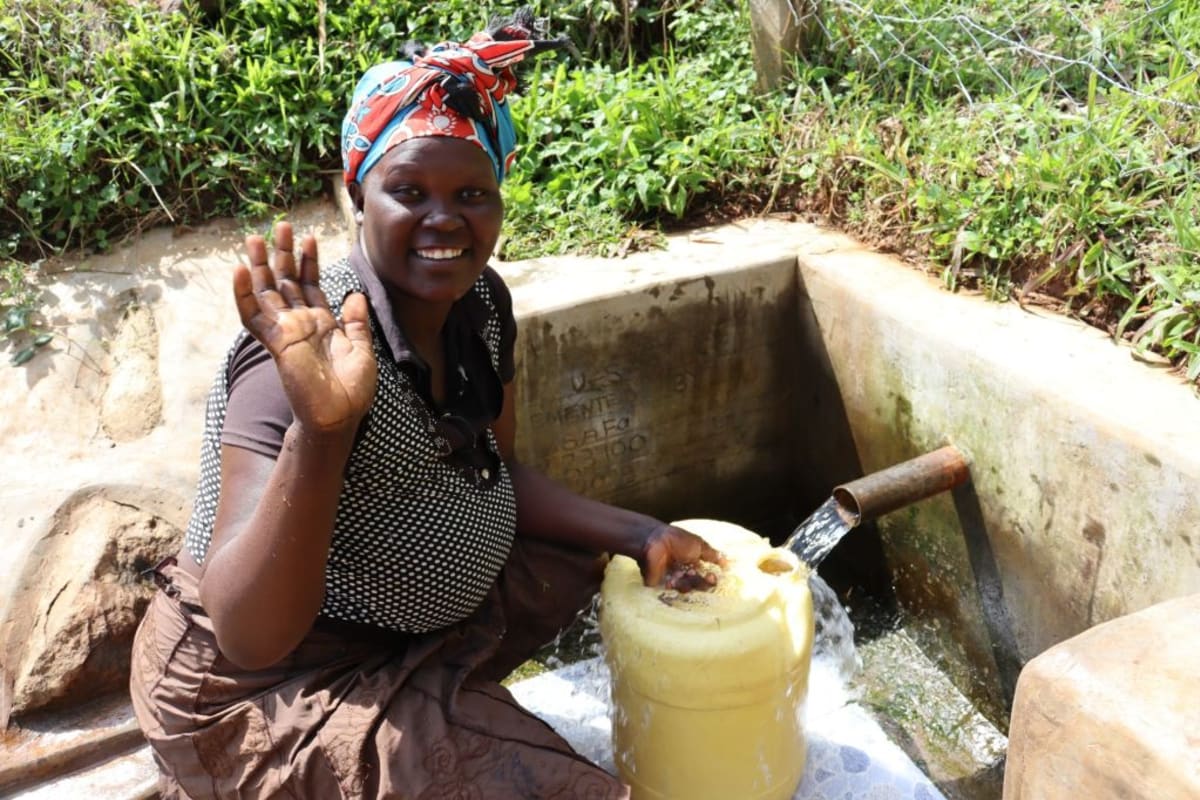For the 190 people who live in this area of Muting'ong'o, the Haron Amkabwa spring is their primary water source.
Our field officer Christine Masinde shared, "The beneficiaries tried to protect the spring on their own, but it was not done by an expert. The structure is in bad condition. People have to step in dirty water as they fetch water. One of the pipes came out of the headwall, and a piece of iron sheet is used as an improvised discharge pipe. The drainage is blocked too. Therefore the cleanliness of the water is not guaranteed."
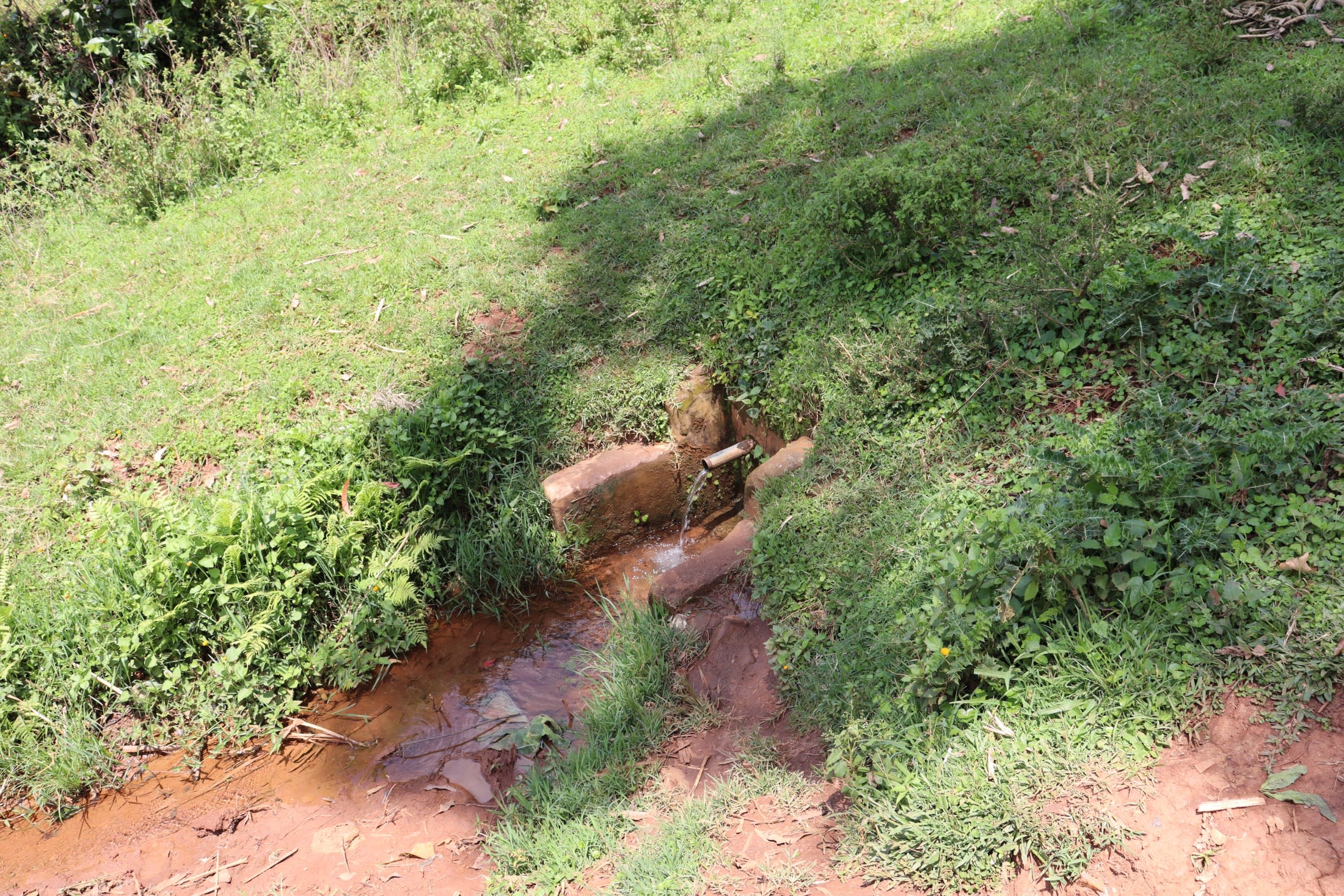
The spring offers plenty of water, but it is not easy to collect, requiring community members to stand ankle-deep in water to place their collection containers under the improvised spouts. And sadly, the water people manage to collect is contaminated despite their best efforts.
Christine reported, "Consuming contaminated [water] from this spring causes diarrhea and other water-related diseases like cholera, typhoid, and dysentery."
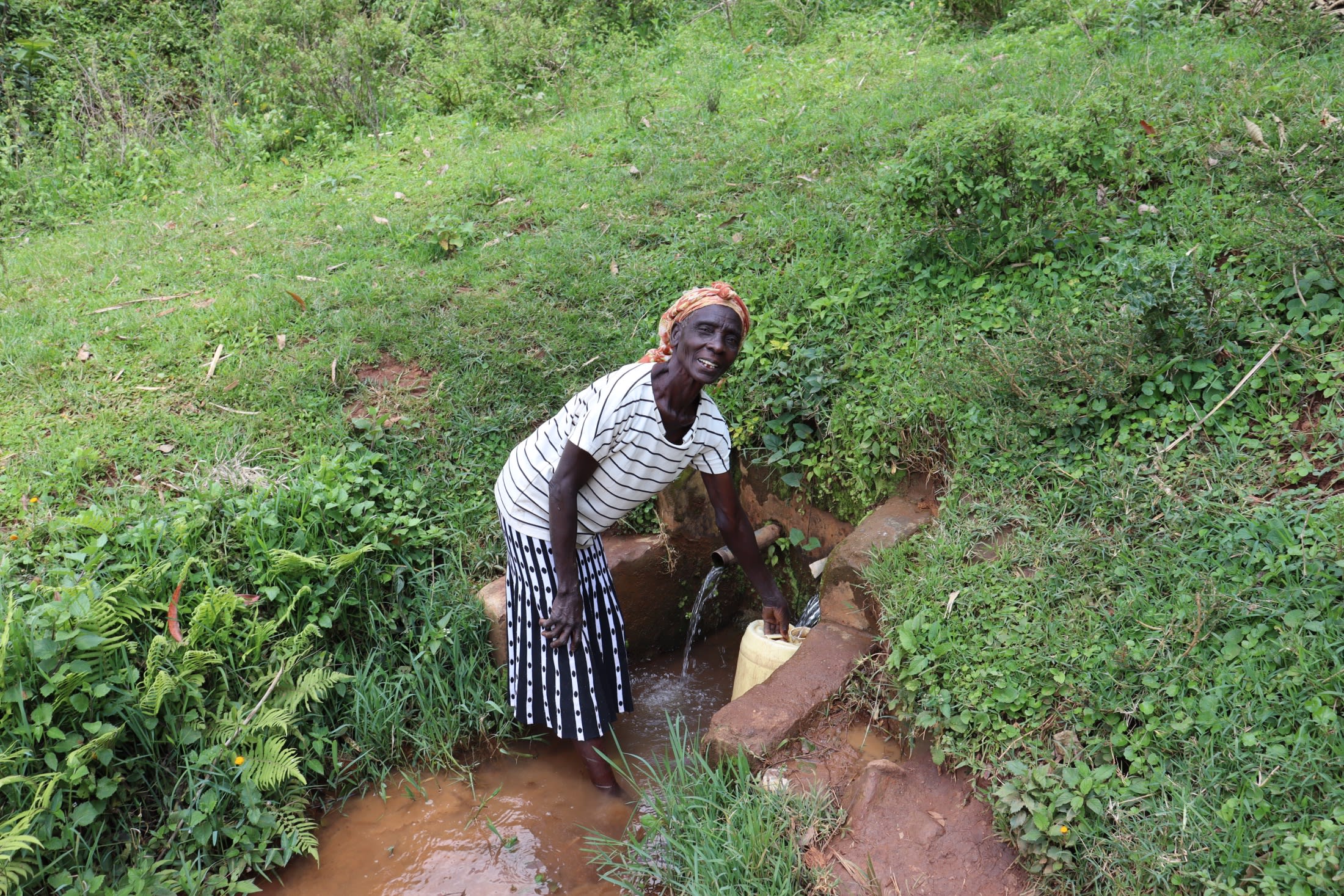
"I used to get frequent headaches and stomachaches. At first, I didn't know that it was related to the contaminated water because I used to take painkillers to stop the pain. One day I saved some money then I went for a blood test which revealed that I had typhoid. I had to spend a lot of money on treatment. Since the issue of contaminated water has not been resolved, I still get sick from drinking dirty water," said Salome Amkabwa, shown above collecting water at the dilapidated spring.
"The partially protected spring has a lot of water, never goes dry, and it serves many people. [But] the surrounding [area] is dirty, and there is stagnant water at the drawing point where people step in it as they fetch water. There is no cut-off drainage to direct dirty water away from the spring during rainy seasons. No fence has been erected to protect the spring eye from being interfered with by animals and humans," said Christine.
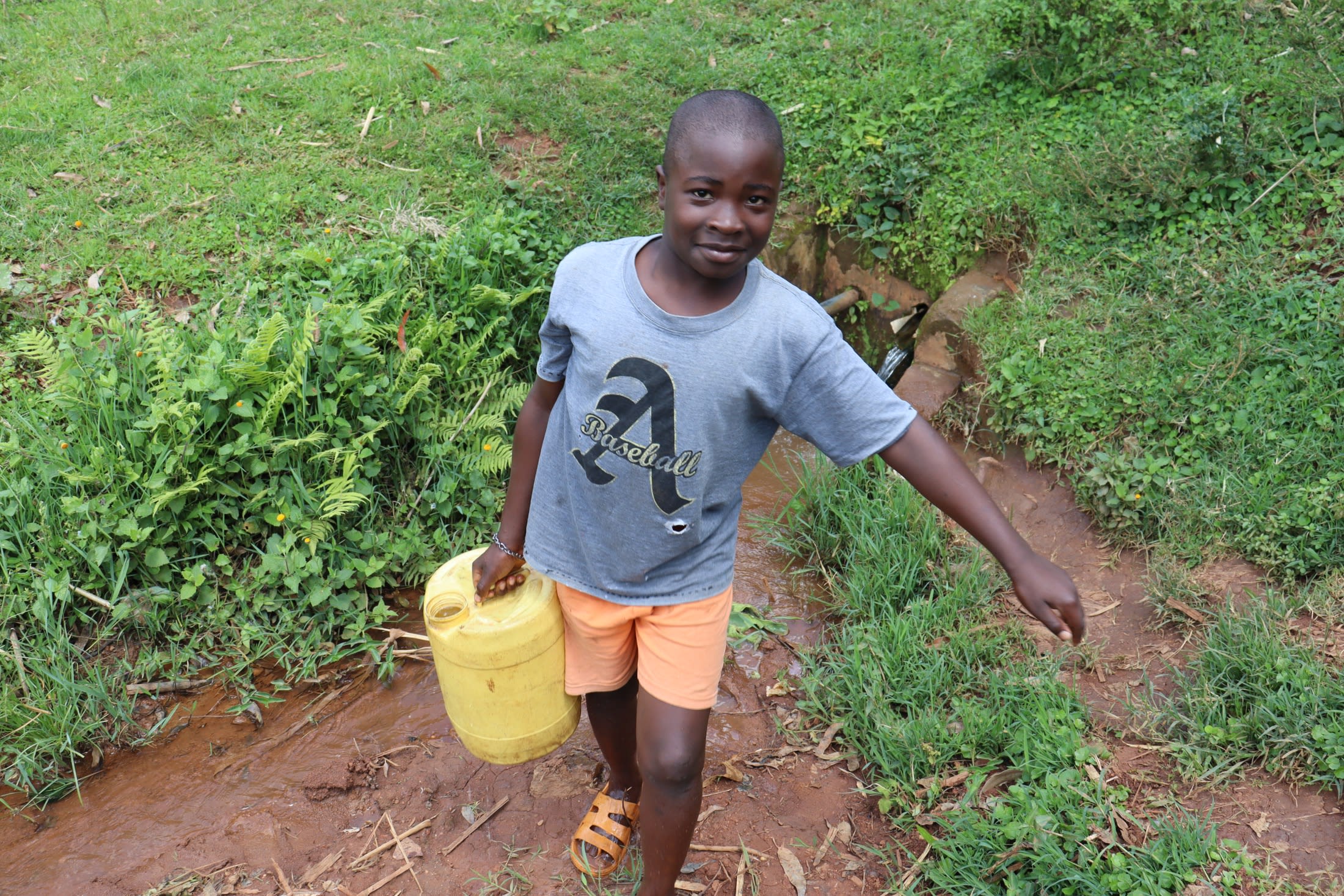
"There is a time I fetched water, then as I was climbing the steep slope, I slipped and fell due to the mud after the rains. I hurt myself badly that I had to be taken to the hospital. Since water is a basic need, after recovery, I still make several trips to the spring to fetch it," said 12-year-old Marvin K., shown above collecting water.
If the spring is reconstructed, community members will be assured that they can access clean and safe water more easily every day.
What We Can Do:
Spring Reconstruction
Although the community attempted to protect this spring, it does not meet World Health Organization standards, which ensure that the water is protected from contamination and safe to access. Local expert artisans will remove the previous spring elements and correctly install new components to ensure the community’s access to clean, sufficient water.
Reconstruction by The Water Project artisans will ensure that this spring has all of the necessary components of a spring protection, which include:
- Stairs to provide access during any season
- Drainage channels to avert stagnant water
- Fencing to prevent the spring box’s filtration layers from being compacted by people and animals
- Correctly positioned discharge pipe(s) that allow(s) water-collection containers to sit beneath without human intervention
- Cement floor with tiles that preclude structure erosion
- Walls that channel water for proper drainage
- A chlorine dispenser to treat water for added safety
Reconstructing the spring will help provide access to cleaner and safer water and reduce the time people have to spend to fetch it. Construction will keep surface runoff and other contaminants out of the water. With the community’s high involvement in the process, there should be a good sense of responsibility and ownership for the new clean water source.
Fetching water is a task predominantly carried out by women and young girls. Reconstructing the spring and offering training and support will, therefore, help empower the female members of the community by freeing up more of their time and energy to engage and invest in income-generating activities and their education.
Training on Health, Hygiene and More
To hold training, we work closely with both community leaders and the local government. We ask community leaders to invite a select yet representative group of people to attend training who will then act as ambassadors to the rest of the community to share what they learn.
The training will focus on improved hygiene, health, and sanitation habits in this community. With the community’s input, we will identify key leverage points where they can alter their practices at the personal, household, and community levels to affect change. This training will help to ensure participants have the knowledge they need about healthy practices and their importance to make the most of their water point as soon as water is flowing.
Our team of facilitators will use a variety of methods to train community members. Some of these methods include participatory hygiene and sanitation transformation, asset-based community development, group discussions, handouts, and demonstrations at the spring.
One of the most important issues we plan to cover is the handling, storage, and treatment of water. Having a clean water source will be extremely helpful, but it is useless if water gets contaminated by the time it is consumed. We and the community strongly believe that all of these components will work together to improve living standards here, which will help to unlock the potential for these community members to live better, healthier lives.
We will then conduct a small series of follow-up trainings before transitioning to our regularly scheduled support visits throughout the year.
Training will result in the formation of a water user committee, elected by their peers, that will oversee the operations and maintenance of the spring. The committee will enforce proper behavior around the spring and delegate tasks that will help preserve the site.

 Protected Spring
Protected Spring
 Rehabilitation Project
Rehabilitation Project










